A Legendary Beast Unleashed
When it comes to exotic supercars, few names evoke the same level of passion and admiration as Lamborghini. And within the illustrious lineup of Lamborghini vehicles, one model stands out as a true icon of power, performance, and uncompromising style—the Lamborghini Murciélago. With its striking design, roaring V12 engine, and thrilling driving dynamics, the Murciélago has cemented its place in automotive history as a legendary beast unleashed on the roads.
The name "Murciélago" is derived from Spanish and translates to "bat" in English. Lamborghini has a tradition of naming their cars after famous fighting bulls, and the Murciélago is no exception. The name pays homage to a legendary Spanish bull that achieved fame for its strength, agility, and courage in the bullfighting arena. Just like its namesake, the Lamborghini Murciélago exudes power, grace, and a fearless spirit on the road.
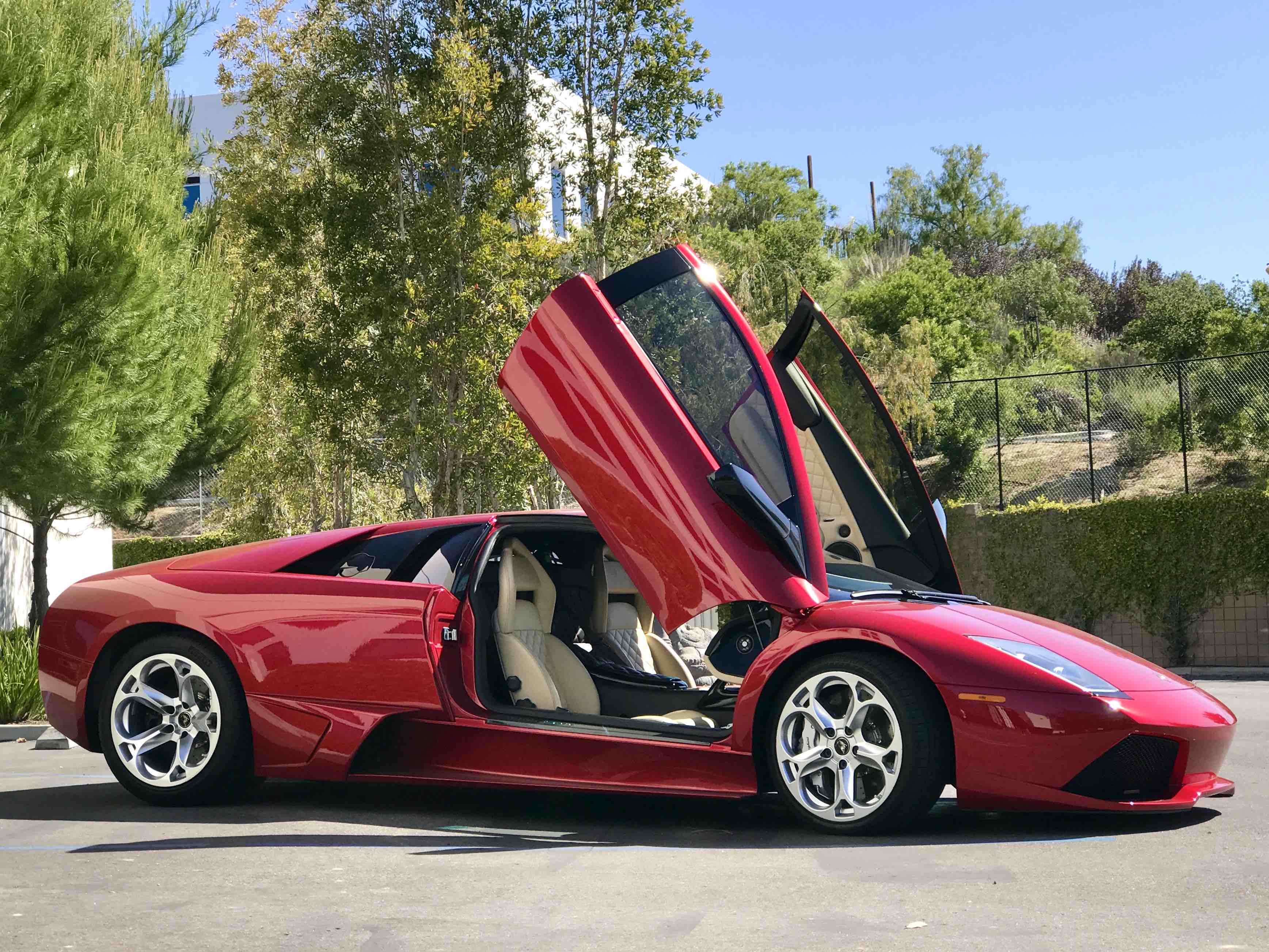
This Lamborghini Murcielago LP640 model is equipped with high-performance Brembo carbon ceramic brakes, offering exceptional stopping power to complement the car's breathtaking speed.
Introduced in 2001 as the successor to the Diablo, the Lamborghini Murciélago marked a new era for the Italian automaker. Its name, inspired by a legendary Spanish fighting bull known for its courage and strength, perfectly encapsulates the essence of this magnificent machine. Designed by Luc Donckerwolke, the Murciélago showcased a bold and aggressive stance, incorporating sharp angles, aerodynamic lines, and iconic scissor doors that have become synonymous with Lamborghini.
Underneath its visually striking exterior lies the heart and soul of the Murciélago—a monstrous 6.2-liter V12 engine. Delivering an earth-shattering 572 horsepower in the early models and later up to 661 horsepower in the LP 670-4 SuperVeloce variant, the Murciélago offered mind-bending acceleration and a top speed of over 200 mph. The spine-tingling exhaust note emitted by the V12 engine is a symphony that echoes through the streets, leaving bystanders in awe and other drivers yearning for a glimpse of this automotive masterpiece.
The Lamborghini Murcielago was manufactured by Lamborghini Automibili in Sant'Agata Bolognese, Italy from 2001 to 2010.
The Murciélago was not just about raw power—it also showcased advanced engineering and cutting-edge technology. Equipped with Lamborghini's signature all-wheel-drive system, the Murciélago offered exceptional grip and handling, allowing drivers to harness its immense power with confidence. The sophisticated suspension system and aerodynamic enhancements ensured stability at high speeds, making it a formidable force on both the racetrack and the open road.
Stepping inside the Murciélago's cockpit is like entering a realm of automotive luxury and opulence. The interior, crafted with the finest materials and meticulous attention to detail, envelops the driver in a world of comfort and performance. Every control, switch, and gauge is ergonomically placed, emphasizing the driver-centric nature of this Italian masterpiece. The iconic fighter jet-inspired start button, nestled under a red flip-up cover, adds to the excitement and drama that awaits when firing up the mighty V12 engine.
Throughout its production run, Lamborghini continually refined and enhanced the Murciélago, introducing special editions and limited-run variants that pushed the boundaries of performance even further. From the lighter and more focused LP 640 to the extreme LP 670-4 SuperVeloce, each iteration of the Murciélago became more potent and exclusive, catering to the desires of the most discerning supercar enthusiasts.

While the production of the Murciélago came to an end in 2010, its legacy and impact on the automotive world will forever remain. It served as a bridge between the traditional Lamborghini ethos and the modern design language that would shape the future models. The Murciélago's design cues can be seen in subsequent Lamborghini models, and its performance DNA has influenced the development of the brand's current lineup.
For collectors and enthusiasts, the Murciélago represents an aspirational piece of automotive history. Its rarity, breathtaking performance, and timeless design have made it a highly sought-after machine that continues to command attention and respect on the roads today. Owning a Murciélago is not just about possessing a car; it's about experiencing an adrenaline-fueled journey every time you slide behind the wheel.
In the realm of exotic supercars, the Lamborghini Murciélago reigns as a true legend. With its awe-inspiring design, ferocious power, and exhilarating performance, it captivates the hearts of automotive enthusiasts around the world. The Murciélago is not merely a car; it's an automotive masterpiece, a symbol of passion and the relentless pursuit of automotive perfection.
The Lamborghini Murciélago was introduced in 2001 as the successor to the iconic Diablo. Designed by Luc Donckerwolke, the Murciélago's exterior design is a testament to Lamborghini's commitment to pushing boundaries and challenging conventions. Its aggressive and angular lines, coupled with the iconic scissor doors, create a visual spectacle that demands attention wherever it goes. The Murciélago's presence on the road is nothing short of commanding, leaving onlookers in awe of its raw power and beauty.

Beneath its striking exterior lies the heart of a beast—a mighty V12 engine. The early models of the Murciélago boasted a 6.2-liter V12 that unleashed 572 horsepower, propelling the car from 0 to 60 mph in a blistering 3.8 seconds. Later variants, such as the LP 670-4 SuperVeloce, elevated the performance even further, reaching a staggering 661 horsepower. The Murciélago's powerplant delivers an auditory symphony, an unmistakable roar that sends shivers down the spine of anyone fortunate enough to witness it in action.
To harness this immense power, Lamborghini equipped the Murciélago with advanced technology and engineering prowess. The all-wheel-drive system provides exceptional traction, allowing the driver to exploit the full potential of the V12 engine without compromising stability. The Murciélago's suspension and aerodynamic enhancements ensure precise handling and optimal performance, creating a harmonious balance between power and control. Whether on the racetrack or the open road, the Murciélago instills confidence in its driver, offering a visceral and engaging driving experience.
Inside the Murciélago's cabin, the fusion of luxury and performance takes center stage. Crafted with the finest materials, the interior exudes a sense of opulence and refinement. The driver-oriented cockpit puts every control within easy reach, ensuring an intuitive and immersive driving experience. From the moment the driver pushes the iconic fighter jet-inspired start button, they are transported into a world of automotive excellence, where every aspect of the car is designed to enhance the driving pleasure.

This Lamborghini Murcielago LP640 features a hydraulic front lift system that raises the front of the car by several inches, providing increased clearance when navigating dips, bumps, or uneven surfaces.
Throughout its production, Lamborghini introduced special editions and limited-run variants, elevating the Murciélago's exclusivity and desirability. These models pushed the boundaries of performance and design, showcasing Lamborghini's unwavering commitment to innovation and pushing the limits of what is possible. The Murciélago represents the culmination of Lamborghini's expertise and engineering prowess, leaving an indelible mark on the automotive industry.
Although the production of the Murciélago came to an end in 2010, its legacy lives on. Its influence can be seen in the design language and performance capabilities of Lamborghini's current lineup. The Murciélago remains a highly coveted collectible, a symbol of automotive excellence and a testament to Lamborghini's commitment to creating unforgettable driving experiences.
Transmission
The Lamborghini Murcielago offered enthusiasts a thrilling driving experience with its choice of transmission options. The car was available with either a 6-speed manual transmission or a 6-speed e-gear automated manual transmission.
The 6-speed manual transmission provided a classic, engaging driving experience, appealing to purists and those who relish the connection between man and machine. With a traditional clutch pedal and manual gearshift lever, the manual transmission allowed drivers to have complete control over gear changes. It provided a more tactile and involving driving experience, allowing drivers to feel the power of the Murcielago's V12 engine as they manually shifted through the gears. The manual transmission option emphasized the raw nature of the Murcielago, appealing to those who sought a more traditional and analog driving experience.
On the other hand, the 6-speed e-gear automated manual transmission offered a modern twist to the driving experience, combining the convenience of an automatic transmission with the thrill of manual gear changes. The e-gear system used paddle shifters mounted behind the steering wheel, allowing drivers to shift gears without taking their hands off the wheel. This automated manual transmission delivered lightning-fast gear changes, enhancing the car's performance and ensuring seamless acceleration. The e-gear system featured different driving modes, including automatic, sport, and Corsa (race), allowing drivers to adapt the transmission's behavior to their desired driving style.
The availability of both transmission options provided buyers with the freedom to choose the driving experience that suited their preferences and driving style. Some drivers preferred the engagement and control offered by the manual transmission, relishing the physical connection to the car and the art of heel-toe downshifts. Others appreciated the convenience and lightning-fast gear changes of the e-gear system, especially in high-performance driving scenarios. The choice between these transmission options allowed Lamborghini to cater to a wider range of drivers, ensuring that each Murcielago owner could enjoy the car in their preferred manner.
Models
The Lamborghini Murciélago, during its production span from 2001 to 2010, underwent various iterations and limited editions that captivated automotive enthusiasts. Each variant had its own unique characteristics, and their production numbers varied, adding to the exclusivity and desirability of these extraordinary machines. Let's delve into the production numbers of some notable models of the Lamborghini Murciélago:

Murciélago Coupe (2001-2006)
The initial Murciélago Coupe, introduced in 2001, set the stage for Lamborghini's flagship model. During its production, a significant number of units were manufactured, solidifying the Murciélago's presence on the roads. Although exact production figures are not available, it is estimated that around 3,000 units of the Murciélago Coupe were produced during this period.
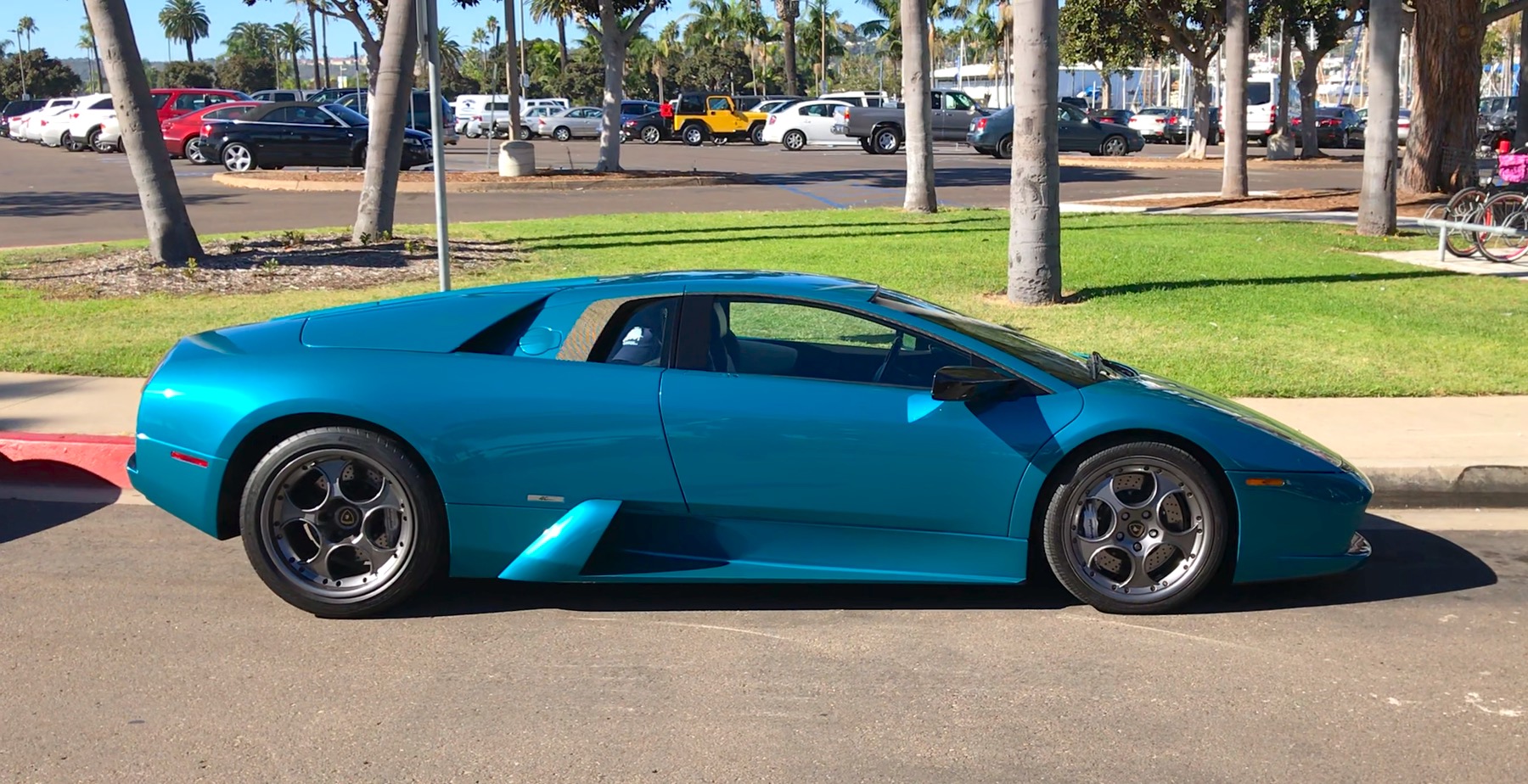
Lamborghini Murciélago 40th Anniversary Edition
Murciélago Roadster (2004-2006)
The Murciélago Roadster, a convertible version of the coupe, made its debut in 2004. It offered open-top motoring with the same potent performance as its fixed-roof sibling. The production numbers for the Murciélago Roadster were relatively lower than the coupe, with approximately 1,500 units believed to have been produced.

Murciélago LP 640 (2006-2009)
In 2006, Lamborghini introduced the Murciélago LP 640, a more powerful and refined version of the original model. The LP 640 featured an uprated 6.5-liter V12 engine, producing 631 horsepower. The exact production numbers for the Murciélago LP 640 are not publicly available, but it is estimated that around 1,200 to 1,500 units were manufactured.
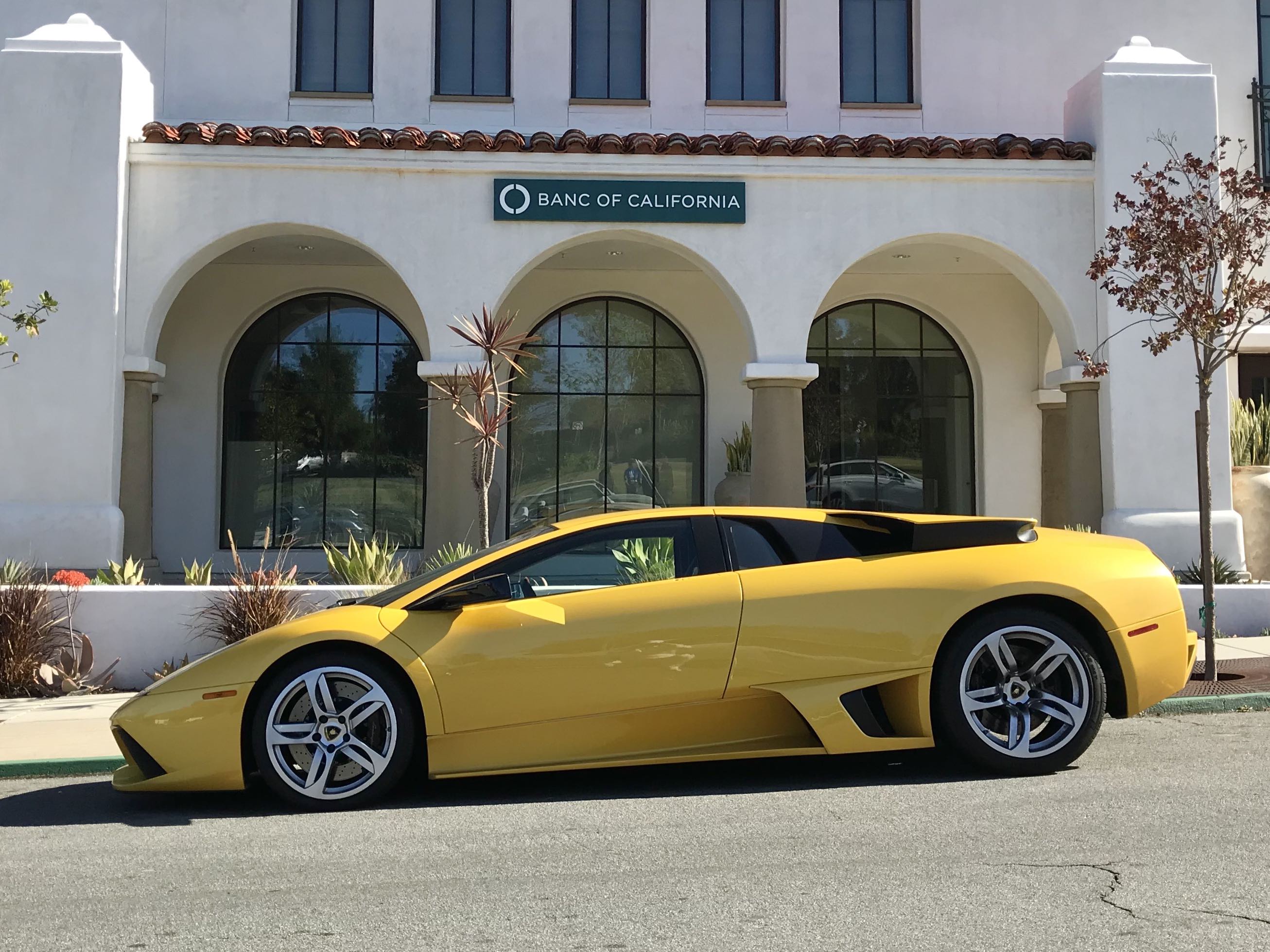
When the engine bay is running very hot, the top side vents or "bat wings" automatically open to allow more air into the engine bay for additional cooling.
Murciélago LP 650-4 Roadster (2009)
The LP 650-4 Roadster was a limited-edition model produced in 2009 to commemorate Lamborghini's 45th anniversary. Only 50 units of this special edition were built, featuring a unique color scheme and exclusive design elements.

Murciélago LP 670-4 SuperVeloce (2009-2010)
The Murciélago LP 670-4 SuperVeloce (SV) represented the pinnacle of the Murciélago's performance. With increased power, reduced weight, and enhanced aerodynamics, the SV variant was a track-focused masterpiece. Approximately 350 units of the LP 670-4 SuperVeloce were produced, making it one of the rarer and more sought-after versions of the Murciélago.

The body of the Murciélago LP 670-4 SuperVeloce is distinguished from previous models by its large rear wing and redesigned front bumper.
It's worth noting that Lamborghini occasionally created special editions and one-off variants during the Murciélago's production run, such as the Reventón and Reventón Roadster. These ultra-exclusive models were limited to very small production numbers, with only 20 coupes and 15 roadsters produced, adding to the Murciélago's allure and exclusivity.
| Model | Years Built |
Units Built |
Power (HP) |
Torque (lb-ft) |
Top Speed (MPH) |
0-60 MPH |
|---|---|---|---|---|---|---|
| Murcielago | 2001- 2005 |
1,779 | 572 | 479 | 205 | 3.8 sec |
| Murcielago LP640 |
2006- 2009 |
2,041 | 631 | 487 | 211 | 3.3 sec |
| Murcielago LP670-4 SV |
2009- 2010 |
163 | 661 | 487 | 209 | 3.2 sec |
| Total | 3,983 |
| Model | Years Built | Units | Power | Torque | Top Speed | 0-60 MPH |
|---|---|---|---|---|---|---|
| Murcielago | 2001-2005 | 1,779 | 572 hp | 479 lb-ft | 205 mph | 3.8 sec |
| Murcielago LP640 | 2006-2009 | 2,041 | 631 hp | 487 lb-ft | 211 mph | 3.3 sec |
| Murcielago LP670-4 SV | 2009-2010 | 163 | 661 hp | 487 lb-ft | 209 mph | 3.2 sec |
| Total | 3,983 |
While exact production figures may vary slightly due to the nature of limited editions and one-off models, the Lamborghini Murciélago's production numbers provide insight into its rarity and collectibility. With each model representing a unique chapter in the Murciélago's history, these supercars continue to capture the imaginations of automotive enthusiasts worldwide.
Performance Specifications
The Lamborghini Murciélago, a true icon of automotive performance, offered a range of models throughout its production years, each with its own distinctive engine and performance specifications. Let's explore the engines and performance capabilities of some notable variants of the Lamborghini Murciélago.
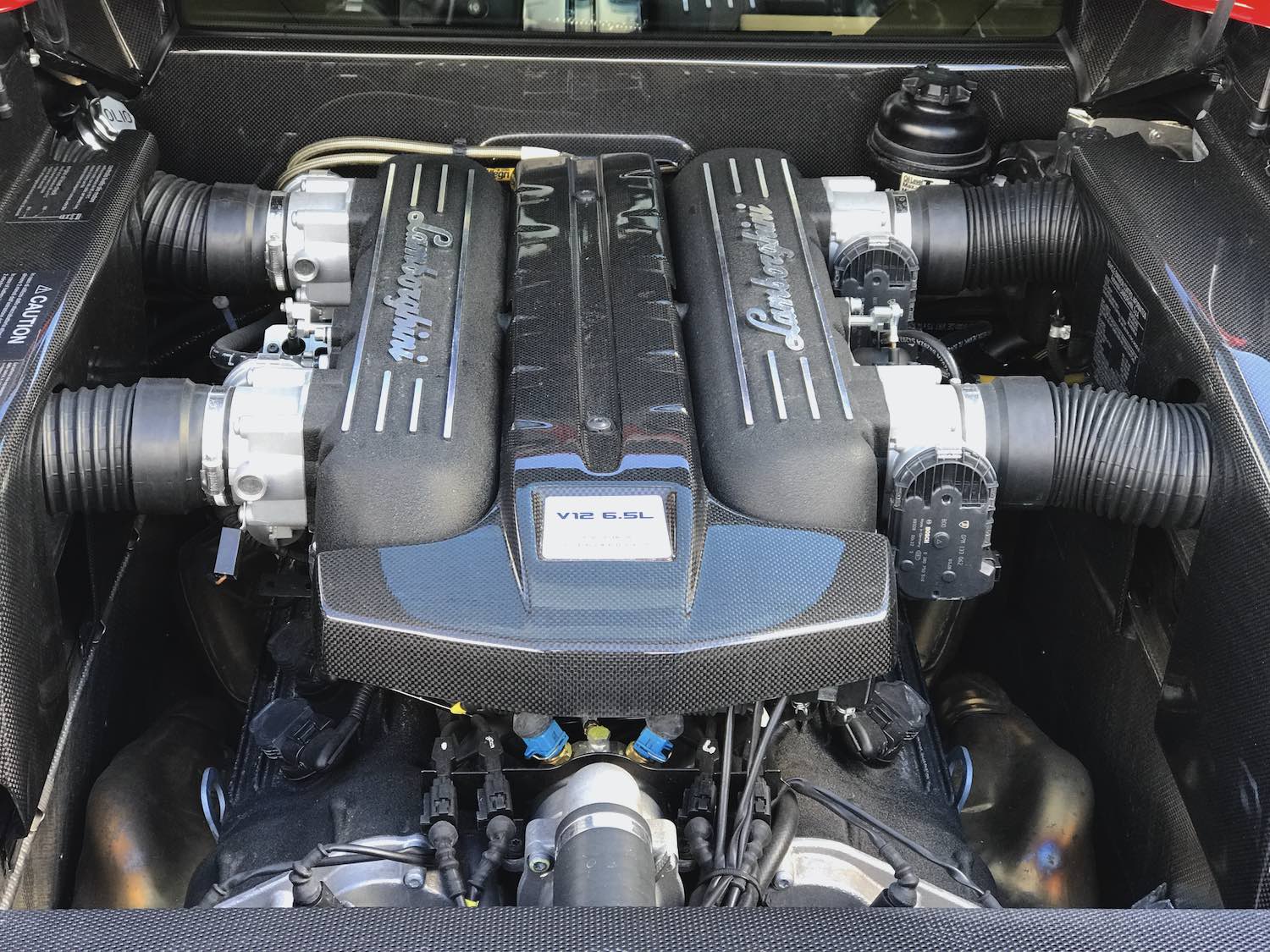
The powerful and massive 6.5 liter, 12-cylinder engine of the Lamborghini Murcielago LP 640 creates tremendous power for acceleration while producing a growling exhaust note.
Murciélago Coupe and Roadster (2001-2006)
The initial Murciélago models were equipped with a mighty 6.2-liter V12 engine. This naturally aspirated powerhouse produced a jaw-dropping 572 horsepower and 479 lb-ft of torque. With this immense power, the Murciélago Coupe and Roadster were capable of accelerating from 0 to 60 mph in approximately 3.8 seconds, with a top speed of around 205 mph.
Murciélago LP 640 Coupe and Roadster (2006-2009)
The LP 640 variants represented an evolution of the Murciélago, offering enhanced performance and refinement. Powering the LP 640 was a 6.5-liter V12 engine, delivering a breathtaking 631 horsepower and 487 lb-ft of torque. With the additional power, the LP 640 Coupe and Roadster accelerated from 0 to 60 mph in approximately 3.3 seconds, with a top speed of around 211 mph.
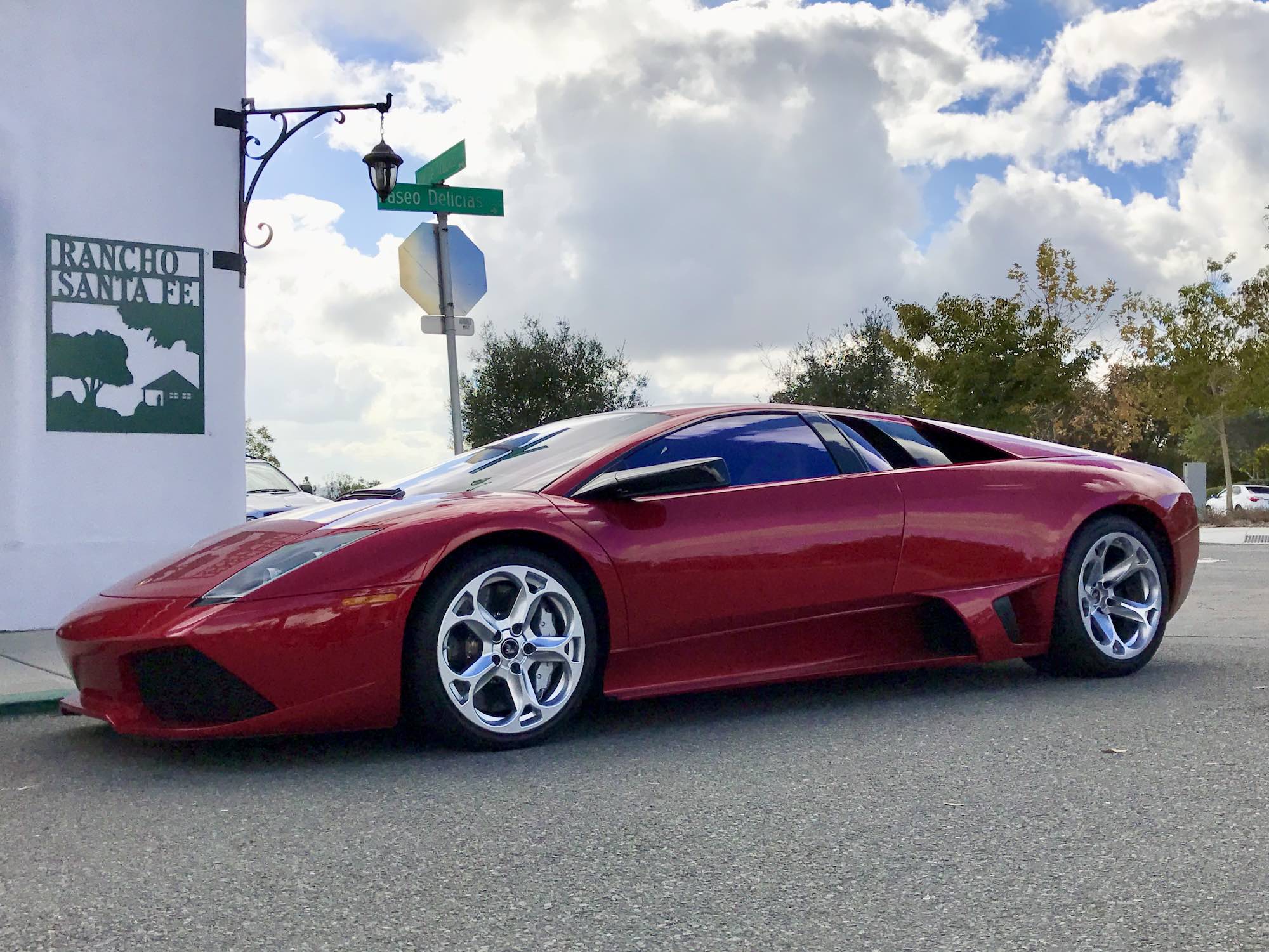
Murciélago LP 650-4 Roadster (2009)
The limited-edition LP 650-4 Roadster took the performance of the Murciélago to new heights. It featured the same 6.5-liter V12 engine as the LP 640, but power was increased to 650 horsepower and 487 lb-ft of torque. This power boost resulted in slightly improved acceleration and top speed compared to the LP 640, with a 0 to 60 mph time of approximately 3.3 seconds and a top speed of around 209 mph.
Murciélago LP 670-4 SuperVeloce (2009-2010)
The LP 670-4 SuperVeloce (SV) represented the ultimate performance variant of the Murciélago. It retained the 6.5-liter V12 engine but received additional tuning, resulting in a staggering output of 661 horsepower and 487 lb-ft of torque. With its reduced weight and optimized aerodynamics, the LP 670-4 SuperVeloce sprinted from 0 to 60 mph in approximately 2.8 seconds, with a top speed of around 212 mph.
These performance figures showcase the Murciélago's extraordinary capabilities on both the road and the track. The combination of the V12 engine's power, the advanced all-wheel-drive system, and the aerodynamic enhancements allowed the Murciélago to deliver breathtaking acceleration, unrivaled top speeds, and exhilarating driving dynamics.
Lamborghini continually refined and improved the Murciélago throughout its production run, resulting in slight variations in performance figures across different model years and editions. Nevertheless, what remains constant is the undeniable legacy of the Lamborghini Murciélago as a force to be reckoned with—a true embodiment of power, performance, and automotive passion.
Design
The Lamborghini Murciélago, known for its striking design and powerful performance, carries a significant meaning behind its name. Let's explore the origin of its name, its iconic design, and the designer responsible for its captivating aesthetics.
The design of the Lamborghini Murciélago is a visual feast that commands attention wherever it goes. It is a testament to the Italian automaker's commitment to pushing boundaries and creating automotive masterpieces that defy convention. The Murciélago embodies an aggressive and angular design language, characterized by sharp lines, muscular contours, and a wide, low-slung stance.
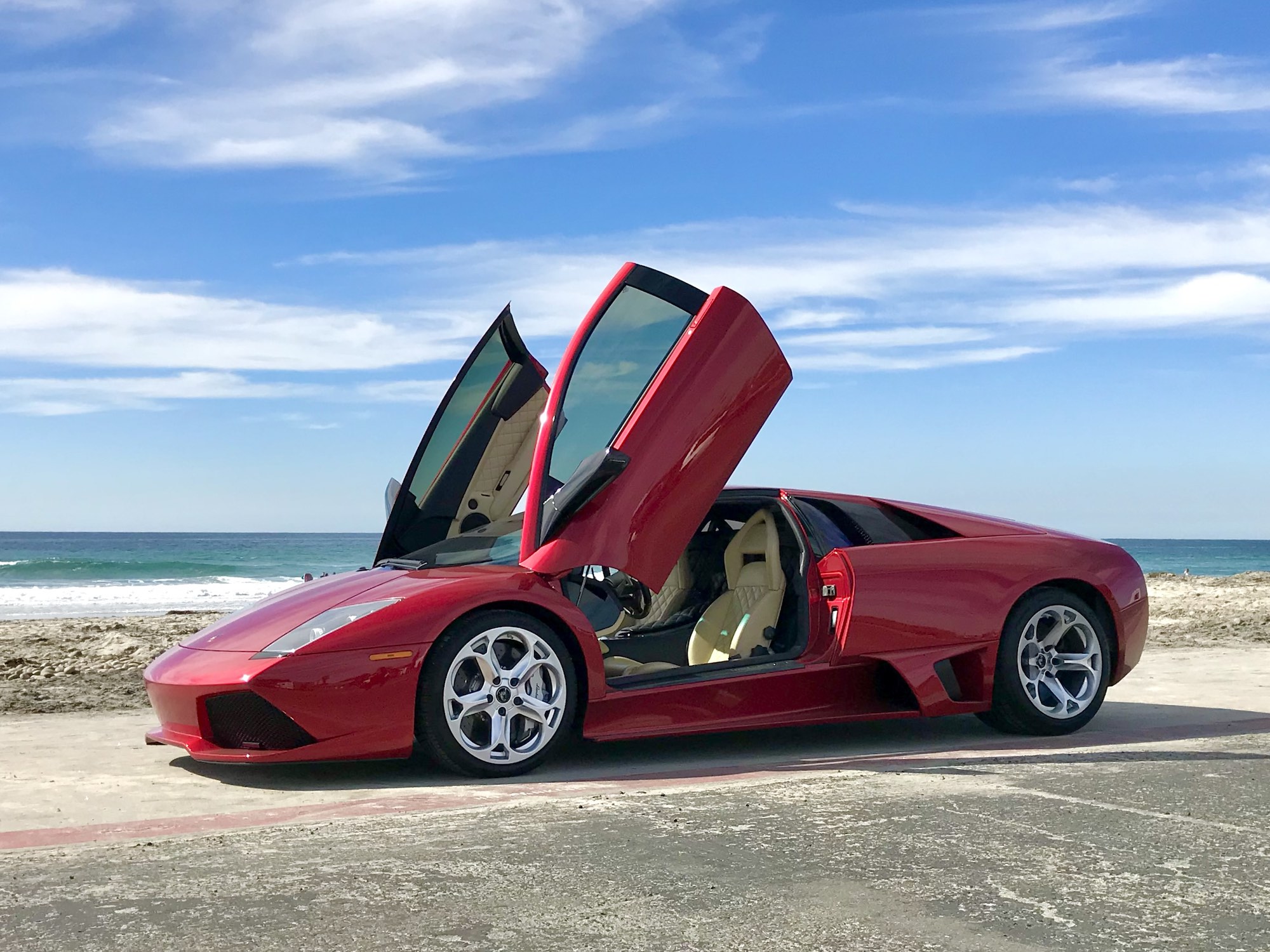
The Lamborghini Murcielago LP 640 with its iconic scissor doors, a signature feature of Lamborghini 12-cylinder super sports cars first introduced in the Lamborghini Countach.
The iconic scissor doors, a signature feature of Lamborghini supercars, are a standout design element of the Murciélago. These upward-opening doors not only add to its visual drama but also serve a practical purpose, allowing easier ingress and egress in tight spaces.
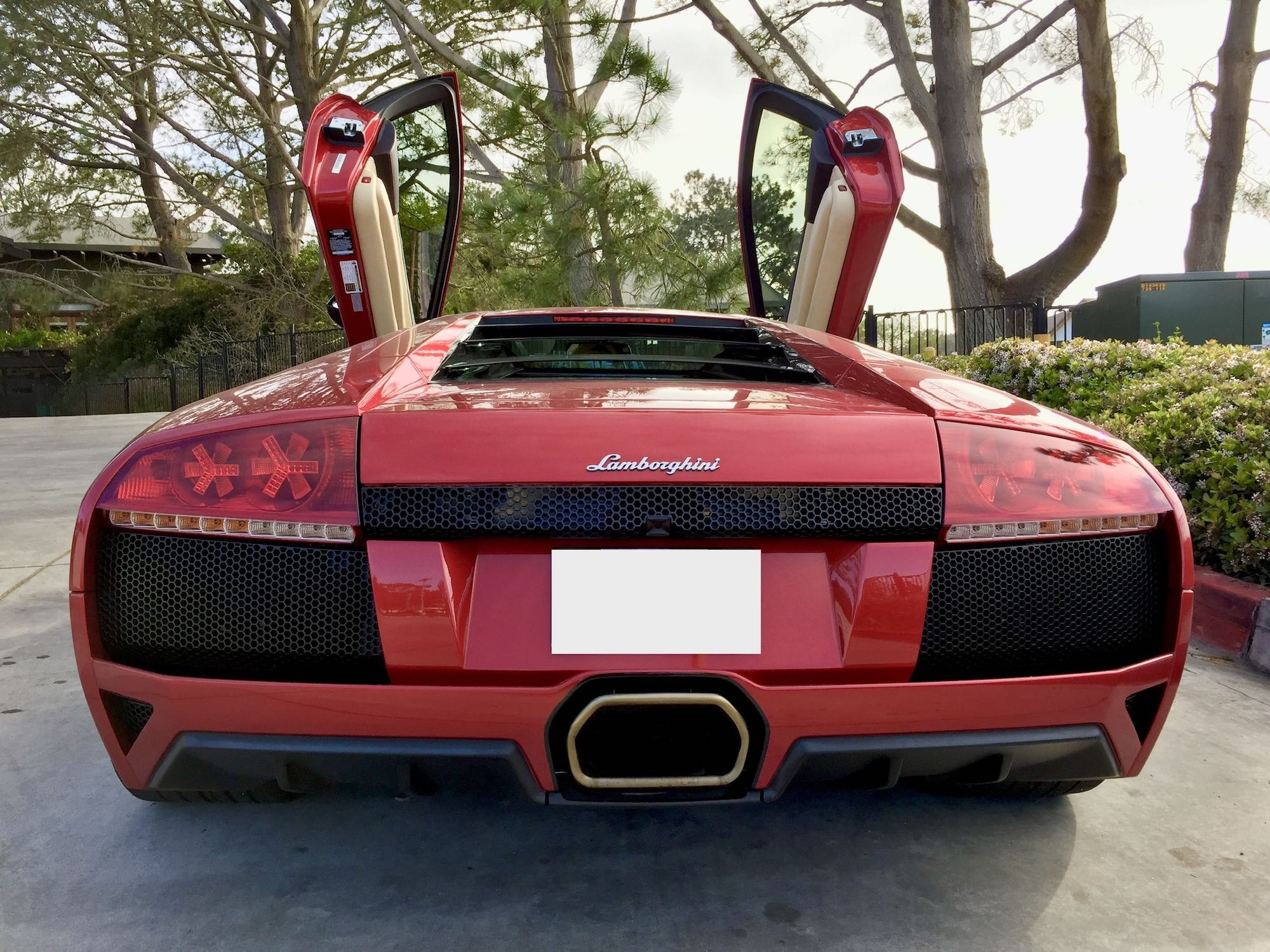
The Lamborghini Murcielago LP 640 boasts a wide and low rear design, exuding an muscular stance and impressive presence.
The Murciélago's design incorporates aerodynamic elements that optimize airflow and stability at high speeds. From the front, the car features large air intakes and a low, aggressive stance that channels air to cool the engine and optimize downforce. The rear showcases a prominent wing and a distinctive hexagonal-shaped exhaust system, emphasizing the car's high-performance capabilities.
The Designer
The man responsible for the design of the Lamborghini Murciélago is Luc Donckerwolke — a Belgian automobile designer, joined Lamborghini in 1998 and played a pivotal role in shaping the design language of the brand. He brought his unique vision and expertise to create the breathtaking aesthetic of the Murciélago.
Donckerwolke's design approach for the Murciélago was to create a car that would be instantly recognizable as a Lamborghini while incorporating modern and aggressive styling cues. He succeeded in capturing the essence of the brand's DNA and creating an iconic design that has stood the test of time.
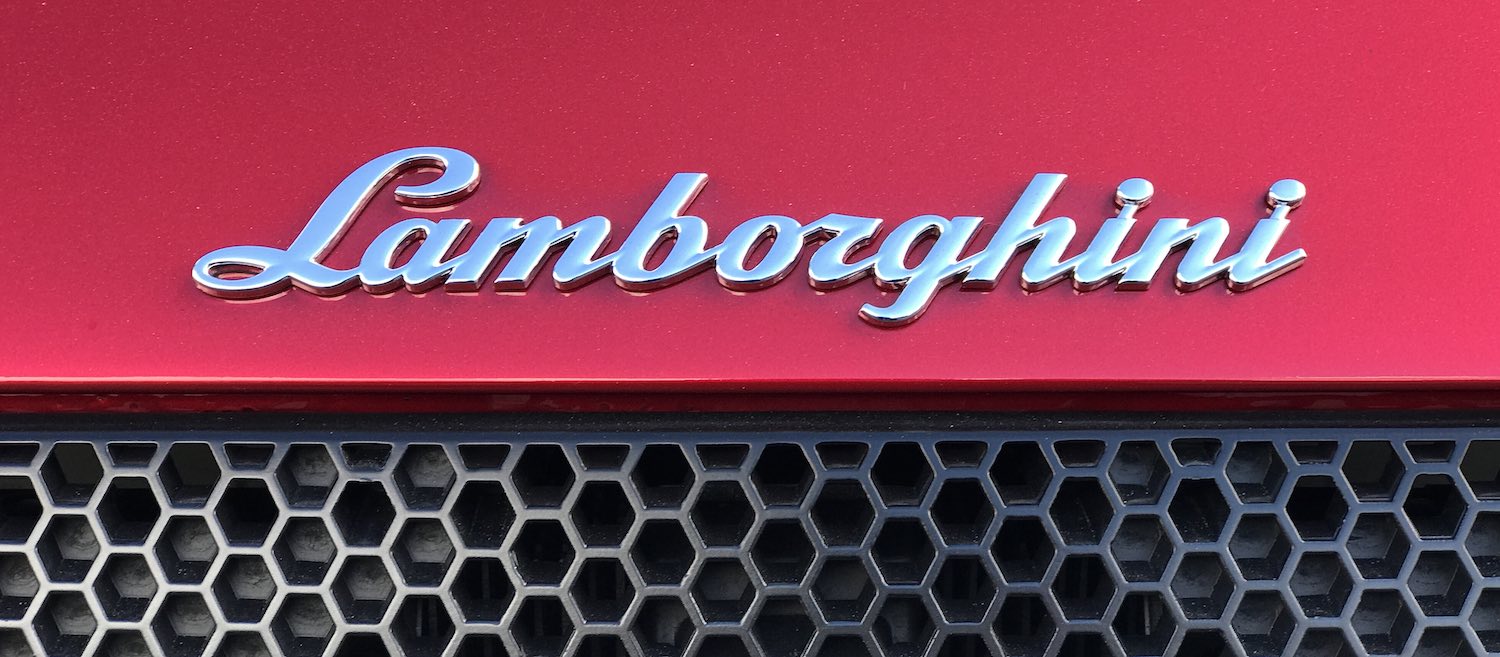
The Lamborghini Murciélago, with its evocative name, captivating design, and the visionary touch of Luc Donckerwolke, represents the epitome of automotive artistry. It continues to inspire awe and admiration as a symbol of power, performance, and uncompromising style, firmly establishing itself as a legend in the world of supercars.
Comparison with Miura, Countach, Diablo, and Aventador

The Lamborghini Aventador, Countach, and Murciélago displaying their flamboyant scissor doors.
Comparing the Lamborghini Murciélago with its iconic predecessors—the Miura, Countach, Diablo, and Aventador—provides insight into the evolution of Lamborghini's design philosophy and technological advancements. Each model represents a different era in Lamborghini's history, offering unique characteristics and a distinct driving experience. Let's delve into the comparisons:

The outstanding Lamborghini V12 models — the Countach, Diablo, Murciélago, and Aventador — epitomize the pinnacle of Italian automotive performance and design.
Lamborghini Miura
The Lamborghini Miura, introduced in 1966, is widely regarded as the world's first supercar. Its groundbreaking mid-engine layout and stunning design set new benchmarks in automotive engineering and aesthetics. Compared to the Murciélago, the Miura is smaller, lighter, and more focused on raw performance. It featured a 3.9-liter V12 engine producing around 350 horsepower. While the Murciélago offers more advanced technology and a more refined driving experience, the Miura's historical significance and timeless design remain unparalleled.

Lamborghini Countach
The Lamborghini Countach, produced from 1974 to 1990, pushed the boundaries of automotive design and performance. Its angular and futuristic design language became synonymous with the Lamborghini brand. The Countach showcased a larger 4.0-liter V12 engine in its early models, producing around 370 horsepower, which increased to over 450 horsepower in later iterations. In terms of performance, the Countach and the Murciélago are closely matched, with both capable of reaching top speeds over 200 mph. However, the Murciélago offers more refined handling and technological advancements.
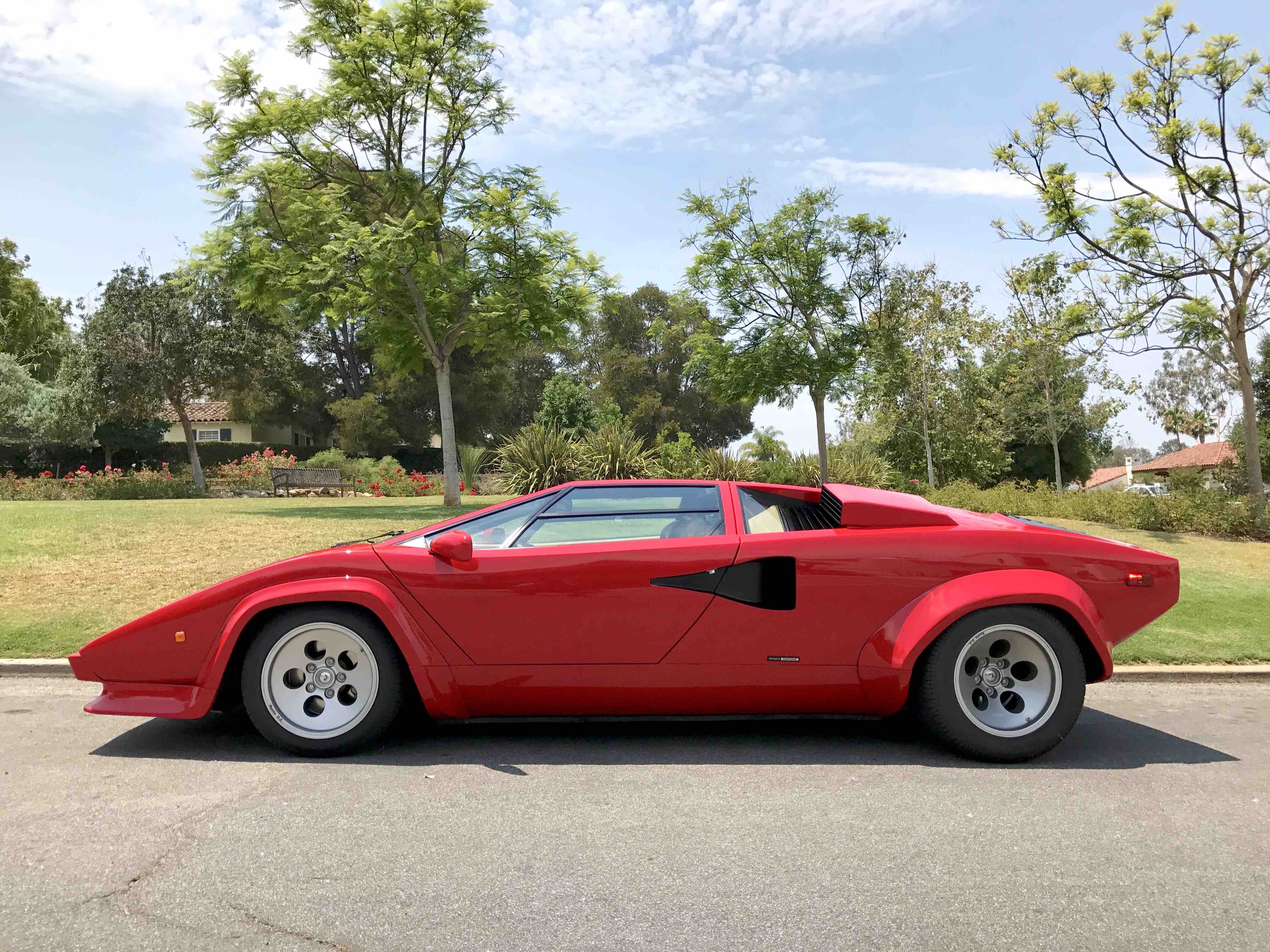
Lamborghini Diablo
The Lamborghini Diablo, produced from 1990 to 2001, represented a significant leap in terms of power and performance. It featured a larger and more powerful V12 engine, with later models delivering over 600 horsepower. The Diablo showcased aggressive styling cues and aerodynamic enhancements. Compared to the Murciélago, the Diablo offered similar power figures but with less advanced technology. The Murciélago, with its refined handling, all-wheel-drive system, and improved ergonomics, provided a more accessible and enjoyable driving experience.

Lamborghini Aventador
The Lamborghini Aventador, introduced in 2011, carries the torch of Lamborghini's flagship model after the Murciélago. It represents a modern interpretation of Lamborghini's design philosophy and boasts cutting-edge technology. The Aventador is powered by a massive 6.5-liter V12 engine, producing over 690 horsepower in its base form, with later models reaching upwards of 730 horsepower. With its advanced aerodynamics, innovative suspension system, and active aerodynamic elements, the Aventador offers unparalleled performance and agility. Compared to the Murciélago, the Aventador represents a significant leap forward in terms of technology, refinement, and sheer power.

In summary, the Lamborghini Murciélago, Miura, Countach, Diablo, and Aventador each hold a special place in Lamborghini's storied history. While the Murciélago builds upon the legacy of its predecessors, it introduces modern advancements in technology, performance, and refinement. Each model represents a unique era in automotive design and engineering, capturing the spirit of Lamborghini's relentless pursuit of automotive excellence.
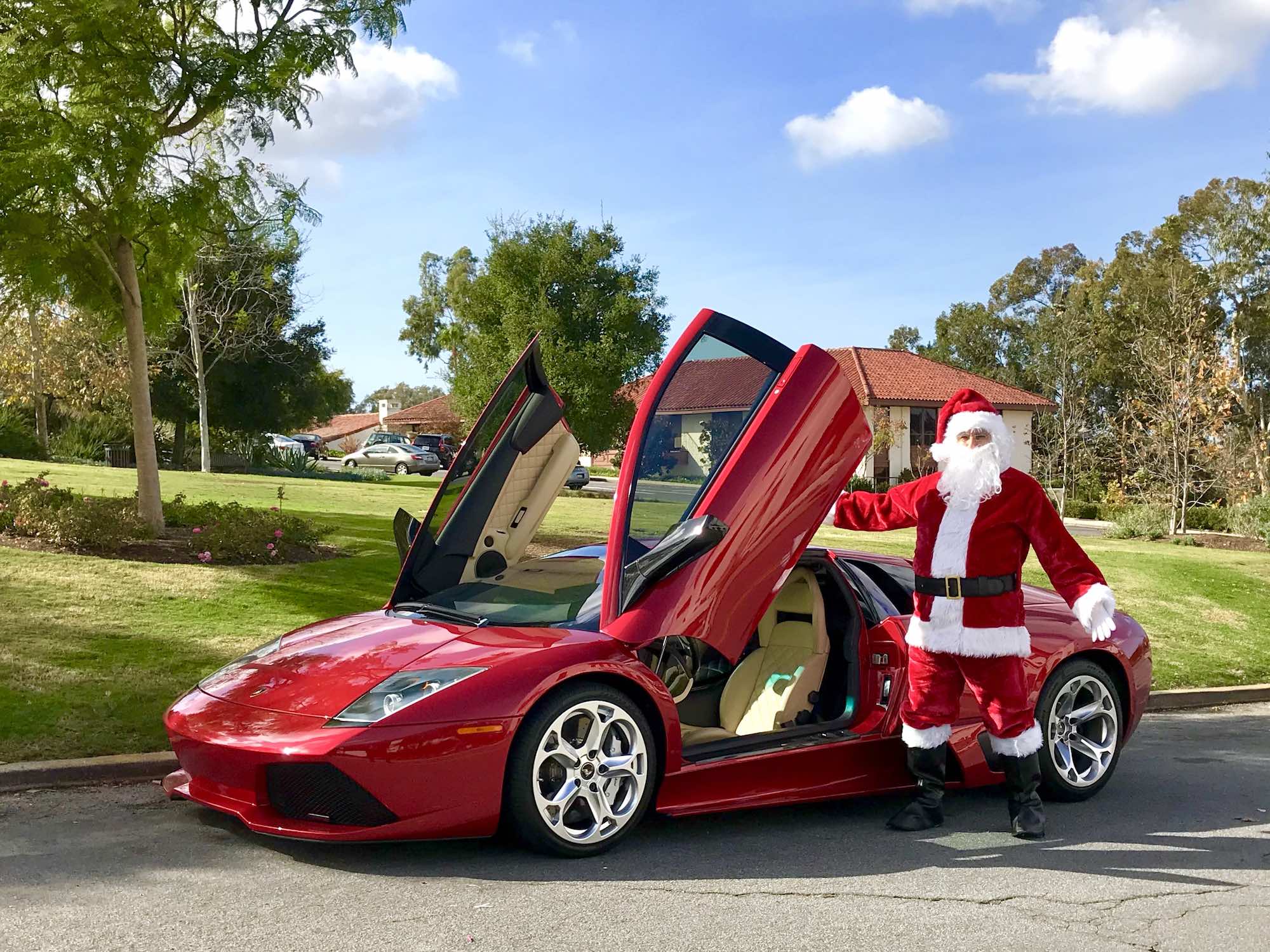
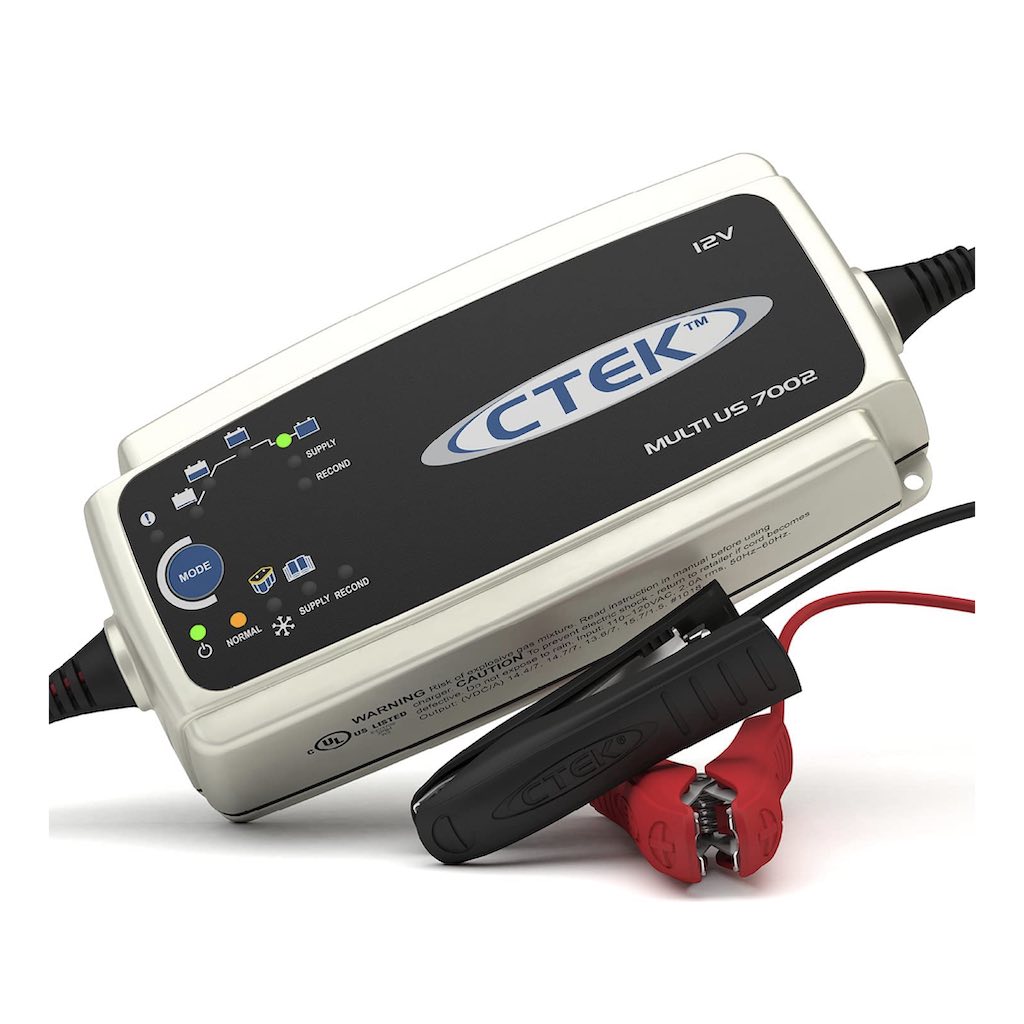
CTEK Battery Trickle Charger
Owning multiple cars is a blessing, but they often don't get driven enough to keep the batteries charged, leading to frustration when one of your prized cars won't start. The solution is a CTEK Battery Trickle Charger, which safely and effectively keeps the battery of your prized car charged. Consider buying multiple chargers to ensure all your cars are always charged and ready to drive.
